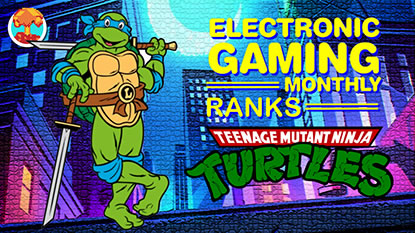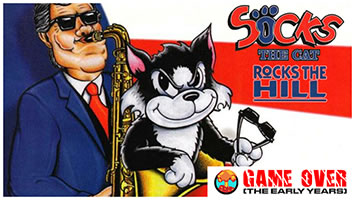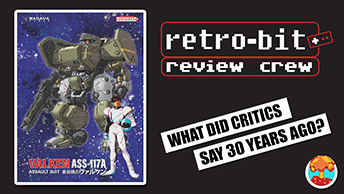- CLASSIC MAGAZINES
- REVIEW CREW
A show recapping what critics thought back
when classic games first came out! - NEXT GENERATION'S BEST & WORST
From the worst 1-star reviews to the best
5-stars can offer, this is Next Generation! - NINTENDO POWER (ARCHIVE)
Experience a variety of shows looking at the
often baffling history of Nintendo Power! - MAGAZINE RETROSPECTIVE
We're looking at the absolutely true history of
some of the most iconic game magazines ever! - SUPER PLAY'S TOP 600
The longest and most ambitious Super NES
countdown on the internet! - THEY SAID WHAT?
Debunking predictions and gossip found
in classic video game magazines! - NEXT GENERATION UNCOVERED
Cyril is back in this spin-off series, featuring the
cover critic review the art of Next Generation! - HARDCORE GAMER MAGAZING (PDF ISSUES)
Download all 36 issues of Hardcore Gamer
Magazine and relive the fun in PDF form!
- REVIEW CREW
- ELECTRONIC GAMING MONTHLY
- ELECTRONIC GAMING MONTHLY RANKS
From Mario to Sonic to Street Fighter, EGM
ranks classic game franchises and consoles! - ELECTRONIC GAMING MONTHLY BEST & WORST
Counting down EGM’s best and worst reviews
going year by year, from 1989 – 2009! - ELECTRONIC GAMING BEST & WORST AWARDS
11-part video series chronicling the ups and
downs of EGM’s Best & Worst Awards!
- ELECTRONIC GAMING MONTHLY RANKS
- GAME HISTORY
- GAME OVER: STORY BREAKDOWNS
Long-running series breaking down game
stories and analyzing their endings! - A BRIEF HISTORY OF GAMING w/ [NAME HERE]
Real history presented in a fun and pithy
format from a variety of game historians! - THE BLACK SHEEP
A series looking back at the black sheep
entries in popular game franchises! - INSTANT EXPERT
Everything you could possibly want to know
about a wide variety of gaming topics! - FREEZE FRAME
When something familiar happens in the games
industry, we're there to take a picture! - I'VE GOT YOUR NUMBER
Learn real video game history through a series
of number-themed episodes, starting at zero! - GREAT MOMENTS IN BAD ACTING
A joyous celebration of some of gaming's
absolute worst voice acting!
- GAME OVER: STORY BREAKDOWNS
- POPULAR SHOWS
- DG NEWS w/ LORNE RISELEY
Newsman Lorne Riseley hosts a regular
series looking at the hottest gaming news! - REVIEW REWIND
Cyril replays a game he reviewed 10+ years
ago to see if he got it right or wrong! - ON-RUNNING FEUDS
Defunct Games' longest-running show, with
editorials, observations and other fun oddities! - DEFUNCT GAMES QUIZ (ARCHIVE)
From online quizzes to game shows, we're
putting your video game knowledge to the test!- QUIZ: ONLINE PASS
Take a weekly quiz to see how well you know
the news and current gaming events! - QUIZ: KNOW THE GAME
One-on-one quiz show where contestants
find out if they actually know classic games! - QUIZ: THE LEADERBOARD
Can you guess the game based on the classic
review? Find out with The Leaderboard!
- QUIZ: ONLINE PASS
- DEFUNCT GAMES VS.
Cyril and the Defunct Games staff isn't afraid
to choose their favorite games and more! - CYRIL READS WORLDS OF POWER
Defunct Games recreates classic game
novelizations through the audio book format!
- DG NEWS w/ LORNE RISELEY
- COMEDY
- GAME EXPECTANCY
How long will your favorite hero live? We crunch
the numbers in this series about dying! - VIDEO GAME ADVICE
Famous game characters answer real personal
advice questions with a humorous slant! - FAKE GAMES: GUERILLA SCRAPBOOK
A long-running series about fake games and
the people who love them (covers included)! - WORST GAME EVER
A contest that attempts to create the worst
video game ever made, complete with covers! - LEVEL 1 STORIES
Literature based on the first stages of some
of your favorite classic video games! - THE COVER CRITIC
One of Defunct Games' earliest shows, Cover
Critic digs up some of the worst box art ever! - COMMERCIAL BREAK
Take a trip through some of the best and
worst video game advertisements of all time! - COMIC BOOK MODS
You've never seen comics like this before.
A curious mix of rewritten video game comics!
- GAME EXPECTANCY
- SERIES ARCHIVE
- NINTENDO SWITCH ONLINE ARCHIVE
A regularly-updated list of every Nintendo
Switch Online release, plus links to review! - PLAYSTATION PLUS CLASSIC ARCHIVE
A comprehensive list of every PlayStation
Plus classic release, including links! - RETRO-BIT PUBLISHING ARCHIVE
A regularly-updated list of every Retro-Bit
game released! - REVIEW MARATHONS w/ ADAM WALLACE
Join critic Adam Wallace as he takes us on a
classic review marathon with different themes!- DEFUNCT GAMES GOLF CLUB
Adam Wallace takes to the links to slice his way
through 72 classic golf game reviews! - 007 IN PIXELS
Adam Wallace takes on the world's greatest spy
as he reviews 15 weeks of James Bond games! - A SALUTE TO VAMPIRES
Adam Wallace is sinking his teeth into a series
covering Castlevania, BloodRayne and more! - CAPCOM'S CURSE
Adam Wallace is celebrating 13 days of Halloween
with a line-up of Capcom's scariest games! - THE FALL OF SUPERMAN
Adam Wallace is a man of steel for playing
some of the absolute worst Superman games! - THE 31 GAMES OF HALLOWEEN
Adam Wallace spends every day of October afraid
as he reviews some of the scariest games ever! - 12 WEEKS OF STAR TREK
Adam Wallace boldly goes where no critic has
gone before in this Star Trek marathon!
- DEFUNCT GAMES GOLF CLUB
- DAYS OF CHRISTMAS (ARCHIVE)
Annual holiday series with themed-episodes
that date all the way back to 2001!- 2015: 30 Ridiculous Retro Rumors
- 2014: 29 Magazines of Christmas
- 2013: 29 Questionable Power-Ups of Christmas
- 2012: 34 Theme Songs of Christmas
- 2011: 32 Game Endings of Christmas
- 2010: 31 Bonus Levels of Christmas
- 2009: 30 Genres of Christmas
- 2008: 29 Controls of Christmas
- 2007: 34 Cliches of Christmas
- 2006: 33 Consoles of Christmas
- 2005: 32 Articles of Christmas
- 2004: 31 Websites of Christmas
- 2003: 29 Issues of Christmas
- 2002: 28 Years of Christmas
- 2001: 33 Days of Christmas
- NINTENDO SWITCH ONLINE ARCHIVE
- REVIEW ARCHIVE
- FULL ARCHIVE
Electronic Gaming Monthly's Best Reviewed Games of 2004
The year is 2004 and things are not looking good for the Oceanic flight that crash landed on Lost island. This was also the year when Spider-Man defeated Doc Ock, players got sucked into World of Warcraft and OutKast wanted you to say "Hey Ya!" But we're not here to shake it like a Polaroid picture, because we're counting down Electronic Gaming Monthly's Best Reviewed Games of 2004. Ice cold!
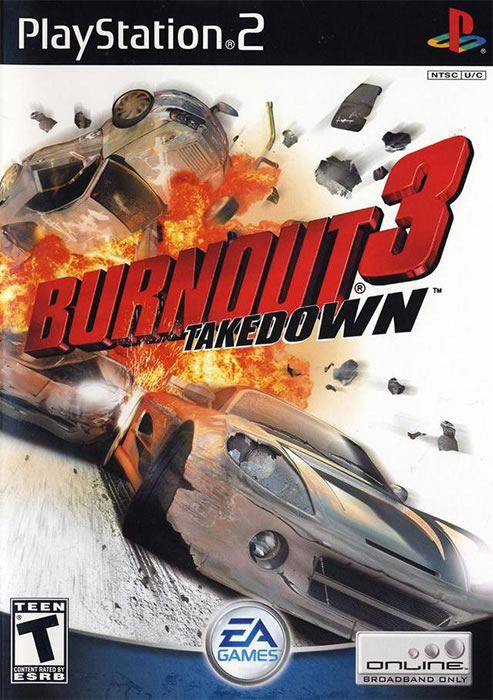
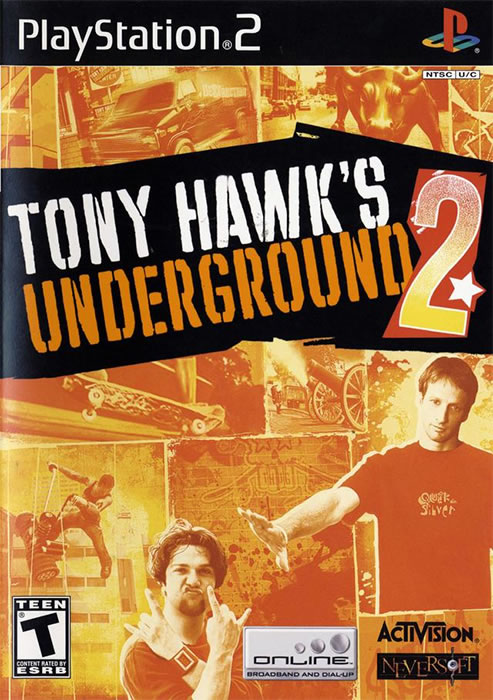
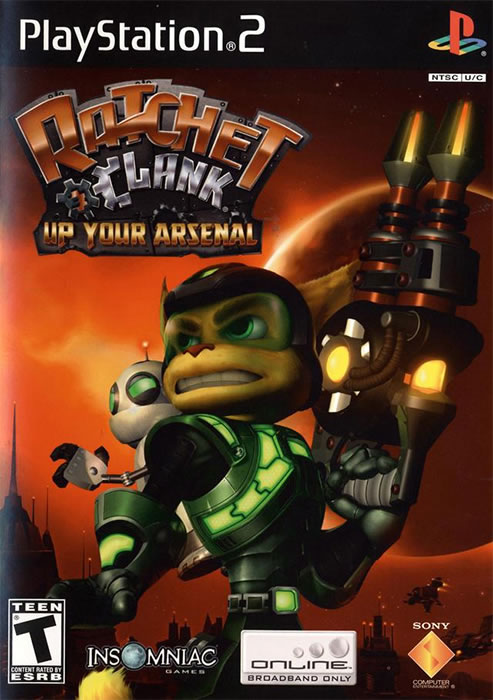
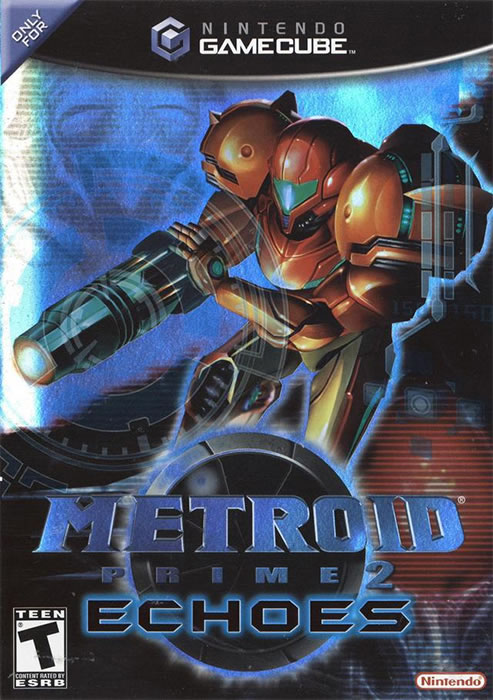
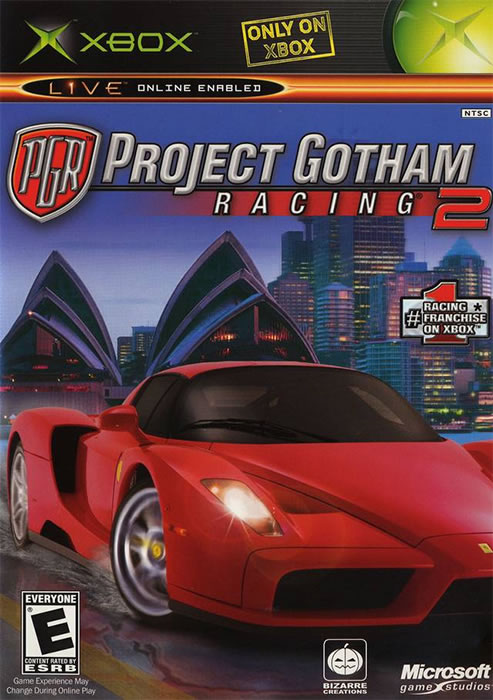
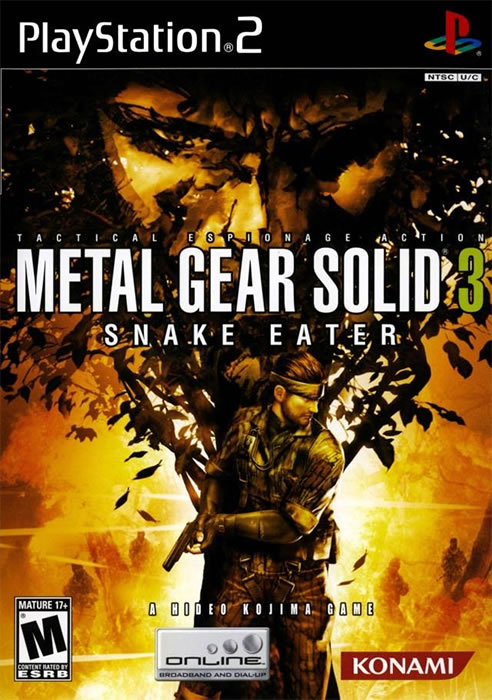
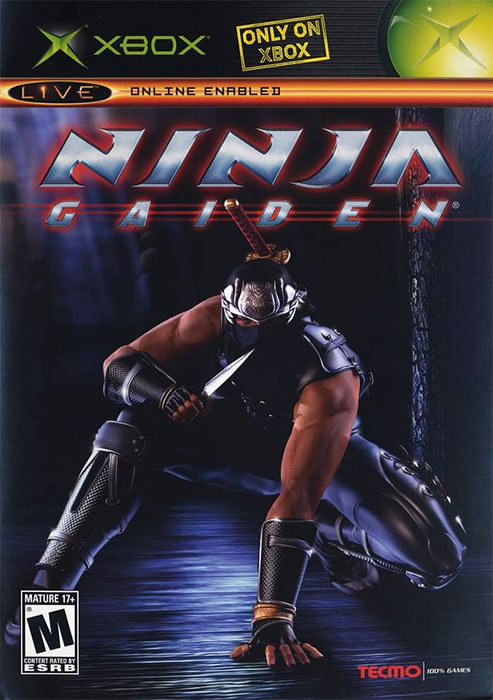
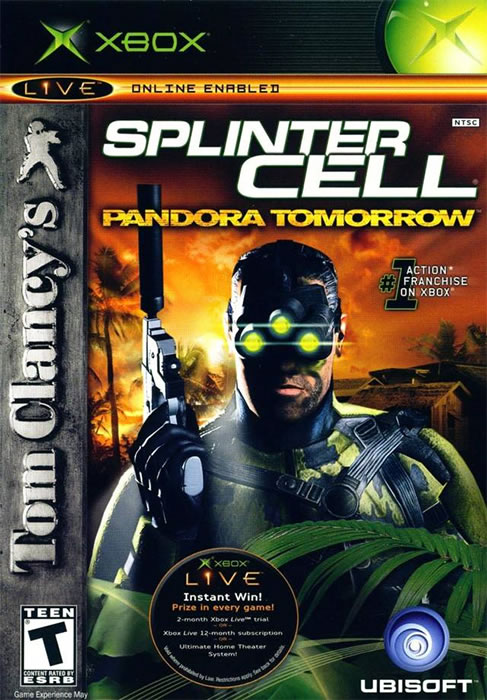
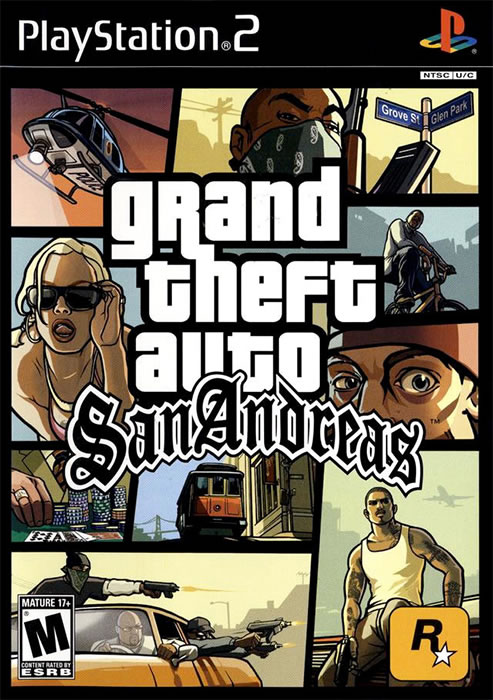
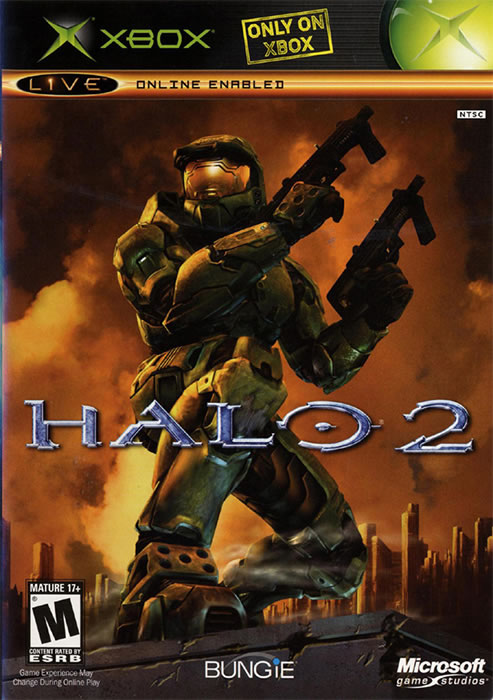

Burnout 3: Takedown#10After five years of EGM fawning over realistic racing sims, Burnout 3: Takedown is here to remind everybody just how much fun an arcade-style racer can be. This is the anti-Gran Turismo, with any sense of realism tossed out the window in favor of cars-ramming-each-other-off-the-road goodness. And let me tell you, no game has ever been better about ramming cars off the road than Burnout 3. Bryan called it "Hell on wheels" and said that he can't stop sinning. "Burnout 3 blows the door off its predecessors with blisteringly fast online play, a massive single-player mode lousy with unlockables, and all the right gameplay tweaks. If you really have a need for speed, don't bother waiting for EA's Underground sequel -- get burned out here."
Like me, Demian loved that Burnout 3 shied away from all the trappings of realistic racing sims. "There's no gear-ratio tweaking. No credits to hoard, no neon to buy, no sprawling city to free-roam around. Just pure arcade racing with simple controls that's so good, you never miss all that other stuff." He concluded that this must-own sequel only has three problems -- no map, crummy rubber-band opponents and long load times. With a score of 9.2 out of 10, Burnout 3: Takedown may have been able to (just barely) earn a spot on this top ten list, but it comes just shy of being the year's best-reviewed racing game. We'll figure out who took home that prize in just a moment.

Tony Hawk's Underground#9Because of magazine lead time, Electronic Gaming Monthly ended up reviewing two different Tony Hawk sequels in the span of twelve months. They started the year off by reviewing Tony Hawk's Underground in January, followed by a review of Tony Hawk's Underground 2 at the end of the year in their December issue. This gives us a chance to compare the two games side-by-side to see which Jackass-infused skateboarding game came out on top. Tony Hawk's Underground 2 definitely put up a good fight and managed to earn a solid score of 8.8 out of 10, but the original Underground is the clear winner with an average of 9.3 and a spot on this list as the ninth best reviewed game of 2004.
Milkman gave it a perfect 10 and argued that in some ways it is the best in the series: "The thing that makes THUG so damn good is that it allows for infinite customization, all of which is uploadable to Neversoft's servers." This means that once you get bored of the pre-made levels, you can download user-created content. "If that isn't awesome, then I don't know what is." Greg Ford liked all the stuff that Milkman mentioned, including the ability to upload your own face to the character creator, but had a couple of complaints. "First, besides Hawaii, none of the levels stand out as overly memorable. Second, while THUG offers some innovation, it remains fundamentally the same game. So, if you're sick of grinding a bench, manualing into a half-pipe, and then pulling off a McTwist, this won't bring you back." With a 9.3 out of 10, Tony Hawk's Underground would mark the final time the series would show up on one of these best-of lists. See you around, birdman.

Ratchet & Clank: Up Your Arsenal#8You know how most years have twelve months? Apparently, that was not the case in 2004, because after EGM got done publishing in January, February, March and right up to December, they then followed it up with a Holiday 2004 issue. This allowed them to review all of the biggest holiday releases without pushing them into the new year, something they should have been doing for at least a decade. One of the unexpected side effects of this thirteenth issue is that half of the games we're going to talk about came from EGM #186. That's right, five of the ten games were from one single issue. That includes Ratchet & Clank: Up Your Arsenal, the third (and best-reviewed) installment in Sony's long-running action/platformer series. Receiving a perfect 10 out of 10 from one of the editors, this is the kind of release that would normally be the Game of the Month in any other issue, but in Holiday 2004, it's overshadowed by four other games.
Calling 2004 the "year of the platformer," Bryan says that Ratchet & Clank 3 sticks to the formula: "Up Your Arsenal features superb platforming stages and heavy-duty combat; our hero's equipped with bigger, badder weapons with even more upgrades, and metallic sidekick Clank's solo bits, while rare, are much more enjoyable." Joe liked it even more than that, saying that "by doling out new weapons, upgrades and gadgets, Insomniac has created a game that rewards players with an almost perpetual feeling of accomplishment. It's quite a hook, but the oddball humor and madcap pacing are what keep you coming back." It may have been overshadowed by some of 2004's biggest games, but Ratchet & Clank: Up Your Arsenal still delivers the action with a stellar average of 9.3 out of 10. That's a height the franchise would never reach again.

Metroid Prime 2: Echoes#7When we last checked in with Metroid Prime, it was not only EGM's best-reviewed game of 2003, but also a first-person adventure game that marked a sea change for the genre. Only a few issues later, and the franchise has dropped from first place all the way down to number 7. But don't freak out, Samus stans, because it's not that EGM didn't like Metroid Prime 2: Echoes, but rather that 2004 was so loaded with massive releases that Nintendo's sequel got buried underneath Halo, Grand Theft Auto, Metal Gear Solid and pretty much every other big-budget franchise you can think of.
Shane was surprised that instead of going bigger and flashier, Retro Studios opted for a slightly low-key sequel. He compared it to Majora's Mask and complained that Echoes drops the ball when it comes to the plot. He was also disappointed by the world design, which "feels small." "Even though Aether's four areas exist in both the light and dark worlds, those worlds seem so similar that it all comes off as a bit cramped." Bryan gave Prime 2 a perfect 10 out of 10, but acknowledged that "it doesn't feel too much like the last game. In terms of weaponry and equipment, the majority of the beams, visors, and suits are completely new, plus the classic screw attack makes its 3D debut and pulls off the transition as beautifully as the rest of the franchise's features have." Bryan's 10 helps to lift the average up to a 9.3 out of 10, which is just enough to land at the number 7 position.

Project Gotham Racing 2#6If you watched our EGM and the Launch Games series, then it will come as no surprise that Electronic Gaming Monthly adored the Project Gotham Racing series. The franchise went from being the top-rated racing game at the Xbox launch to the best-reviewed game at the debut of the 360. But what about Project Gotham Racing 2, the sequel that links together those must-play games? They loved it, obviously. It was, once again, the top-rated racing game of the year, narrowly beating out Burnout 3: Takedown for that prize.
Sure, the critics were impressed with the great graphics and wild variety of modes, but it was the Xbox Live integration that would cement Project Gotham Racing 2 as the must-own racer of the year. Demian explains why that's important: "PGR2 is also one of the first Xbox Live Aware titles, so not only can you play against random yahoos via Live, but you can also see how your scores for each single-player event stack up against the rest of the world. It's genius." Che also loved the Xbox Live integration, saying that "Online gaming is currently what sets Xbox apart from its competition, and PGR2 is the first title to take full advantage of what it means to be Live-enabled. You won't find a more value-packed racer anywhere -- on any system." With an average of 9.5 out of 10, Project Gotham Racing 2 is not only the top-rated racing game of 2004, but also the best-reviewed Project Gotham Racing installment. Sadly, the series would eventually be phased out in favor of Forza.

Metal Gear Solid 3: Snake Eater#5A lot has changed in the six years since Konami released the original Metal Gear Solid. For one thing, we've seen a real push towards cinematic stories in games, which was one of the franchise's biggest selling points back in 1998. We've also seen the rise of stealthy competitors, including a more than formidable foe in Splinter Cell. All of these things should work against Metal Gear Solid 3: Snake Eater, but Hideo Kojima had a secret weapon up his sleeve -- make the game as weird and memorable as possible. Sure, you may prefer the stealth gameplay in Pandora Tomorrow, but you're never going to forget Snake Eater's massive open world and crazy plot twists. It's the developers daring you to find a game more cinematic and over-the-top than this. And in 2004, that could not be done.
Shane gave Snake Eater a 10 and likened it to playing a really good game: "You know that feeling you get when you're watching the ending credits of a really amazing game -- when you instantly yearn to start all over again to discover all the stuff you missed along the way? You'll be feeling that way about five hours into MGS3. Simply put, it's the deepest, longest and most replayable chapter of the Metal Gear Solid series yet." Bryan loved the level designs, saying that the "new emphasis on outdoor play presents welcome challenges to the sneaky, as the uneven terrain makes the patterns of patrolling guards less predictable, plus the lack of an onscreen radar and the ability to slice someone's jugular with the new, intuitive close quarters combat move add to the tension." The critics also agreed that the game looked better than it should on the PlayStation 2 and featured some of the best boss fights of all time. This third installment ties with Metal Gear Solid 2 with an average score of 9.5 out of 10.

Ninja Gaiden#4I can't believe I'm about to say this, but Ninja Gaiden is the closest we're going to get to a fighting game on this best of 2004 list. You see, this was an especially weak year for one-on-one fighters, with the highest-scoring game being Guilty Gear X2 #Reload in 31st place. Thankfully, by combining the best elements of 3D brawlers and fighting games, Tecmo's Ninja Gaiden reboot had enough going for it to scratch that multi-hit combo itch. This was one of the generation's defining action games, giving players a challenging adventure that required both patience and skill to complete.
The EGM critics fell in love with Ninja Gaiden, with all three editors giving the game a near-perfect 9.5 out of 10. Shane gushes that "it's as good as you hoped it would be. Hell, it's actually better." He loved running on crumbling walls, swimming through flooded tombs, leaping over oozing rivers of magma and fighting off waves of enemies, all of which takes advantage of the tight and compelling gameplay. CJ argued that Ninja Gaiden comes with stunning visuals, but is more than just a pretty picture: "Gaiden's gameplay is equally well crafted, with responsive control that demands fighting game-caliber reflexes." They all agreed that the game is punishingly difficult and gave Ninja Gaiden an average of 9.5 out of 10.

Splinter Cell: Pandora Tomorrow#3The problem with these top ten lists is that their focus is so narrow that they can miss out on some of the year's biggest games and trends. A good example of that is Tom Clancy's Splinter Cell, which averaged a 9 out of 10 when it was reviewed in the January 2003 issue of EGM. This was a seminal release that changed the way the critics looked at stealth games, but in a competitive year like 2003, a 9 out of 10 earns you a spot at number 25, far outside of the top 10. If UbiSoft wants to get mentioned in one of these videos, they are going to have to do a lot better than that. And that's exactly what they did with Splinter Cell: Pandora Tomorrow, the 2004 sequel that was a massive leap forward for the franchise in every possible way.
To say that Shoe was wowed by the game would be an understatement, to say the least: "Pandora Tomorrow is that wow game and thus deserves a 10 -- and I'm not just talking about a 'damn, these graphics look fine' kind of wow. From the opening cinema to the last stage, from the single- to multi-player, Pandora Tomorrow is the most incredible 'stealthy soldier' game around." He said that it set a new standard that eclipsed even the all-mighty Metal Gear Solid. Blasphemy! Crispin loved everything that Shoe raved about, as well as the inventive multiplayer mode: "The revolutionary spooks vs. guards online game packs an Everest-steep learning curve likely to intimidate casual spies. In fact, I can guarantee that you won't have fun the first time you dive in. But stick with it: Once you master tactics and memorize the level's layout, you won't be able to log off -- until you try a new level and have to figure out its intricacies from scratch." We may have missed out on talking about the game last year, but Pandora Tomorrow earns a 9.7 out of 10 and proves that Splinter Cell is a franchise worth paying attention to.

Grand Theft Auto: San Andreas#2When people ask me why Grand Theft Auto games always seem to earn impossibly high scores, I'm quick to say that it's because they always exceed expectations. Just look at Grand Theft Auto III, a game that was covered with a heavy amount of skepticism before release and went on to single-handedly popularize the open world genre. The same thing happened with Vice City, which not only improved on the sandbox action in every way, but added so much style and nostalgia that it was impossible not to fall in love. Now comes San Andreas, a game designed to up the ante and almost overwhelm the player. It gave us a massive and constantly changing world to explore, three different cities, hundreds of songs, the biggest Hollywood actors, tons of minigames and even the freedom to gain a bunch of weight for some reason. In other words, Grand Theft Auto: San Andreas didn't just match the ambitious heights of the previous games, but it exceeded them. And when a developer exceeds expectations by that much, critics are more willing to overlook some of the imperfections. Even the obvious ones.
Reading the reviews sixteen years later, it's clear that the EGM critics were shocked by how big and immersive the game was. John said that he was prepared for something "big," but he wasn't quite ready for it to be "frickin' enormous." Rarely do you experience a game that is busting out new moves and experiences all the way through to the very end. Such is the scale of the game that major characters voiced by well-known stars don't even make their first appearance until more than 40 hours in." Shoe said that he felt like a kid again: "My fun is only limited by my imagination. You can do so much here at your leisure. For example, I spent twice as long in the first city, Los Santos, as Crispin did because I was really determined to fight rival gangs for turf, work out until my arms looked like Popeye's, and stuff my girlfriend's ever-hungry face with food. And all this wasn't really even helping me finish the game." To be fair, all of the editors had complaints about the inflexible missions, some glitches and a lot of janky moments, but the absurd size and scale of the adventure made it impossible for the game to average anything lower than a 10 out of 10.

Halo 2#1It may have taken three years and 36 issues, but the world finally has a Halo killer -- and it's Halo 2. I kid, but that was the feeling at the time. It seemed like every company was trying to outdo Master Chief's first-person adventures, with almost all of them coming up way short. What's so impressive about Halo 2 isn't that it's a huge step up as both a single- and multiplayer game, but rather how easy Bungie makes it look. It's all so effortless, almost as if the developer is scratching their heads wondering why everybody can't catch up. Besides Metroid Prime 2, the only first-person game to even come close to Halo 2 was The Chronicles of Riddick: Escape from Butcher Bay, which averaged an 8.7 out of 10. That's a great score, but when all three editors are giving the Halo sequel perfect 10s, it's hard to compete.
EGM reviewed both the single-player and multiplayer modes separately, much preferring one over the other. In fact, in some ways, the critics seemed a little disappointed by the story. Che pushes back a little: "You could argue that given all the hype, Halo 2 is disappointingly more of the same, but with more weapons, vehicles, enemies and a much better story line." He liked the way Bungie humanized the Covenant, though noted that it brings more questions than answers. Mark was frustrated that he couldn't say more about the story: "Unfortunately, one of Halo 2's biggest strengths is what I'm allowed to talk about the least:" Thankfully, he had plenty of time to talk about the massive scale of the levels, the incredible firepower, the cool new vehicles and the stunning open environments.
While the editors carefully danced around a major spoiler, they felt liberated when it came to the multiplayer mode. Shoe was quick to bring up the game's most important new addition: "No doubt, a lot of Halo 2's multiplayer is just Halo's with a new coat of fine-silver polish. But the biggest addition allows more people to battle together than ever before: Online play. Now those of you with Xbox Live can forget about lugging around all that hardware for local-networked games. It's all so ... wonderful. Like, I'm going to spend the next year of my life online with Halo 2 kind of wonderful. You easily have enough here to keep you playing forever." Some critics even wondered if Halo needed a single-player mode at all, since the online multiplayer should be the series' focus. With everybody in awe of both halves of the game, Halo 2 averages an unbeatable 10 out of 10, making it Electronic Gaming Monthly's best-reviewed game of 2004.
HOME |
CONTACT |
NOW HIRING |
WHAT IS DEFUNCT GAMES? |
NINTENDO SWITCH ONLINE |
RETRO-BIT PUBLISHING
Retro-Bit |
Switch Planet |
The Halcyon Show |
Same Name, Different Game |
Dragnix |
Press the Buttons
Game Zone Online | Hardcore Gamer | The Dreamcast Junkyard | Video Game Blogger
Dr Strife | Games For Lunch | Mondo Cool Cast | Boxed Pixels | Sega CD Universe | Gaming Trend
Game Zone Online | Hardcore Gamer | The Dreamcast Junkyard | Video Game Blogger
Dr Strife | Games For Lunch | Mondo Cool Cast | Boxed Pixels | Sega CD Universe | Gaming Trend
Copyright © 2001-2025 Defunct Games
All rights reserved. All trademarks are properties of their respective owners.
All rights reserved. All trademarks are properties of their respective owners.













